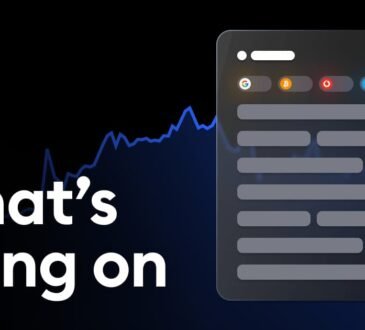As the 16th BRICS summit approaches,
the world is watching with anticipation. With the introduction of new members
and the ongoing development of a BRICS currency, this gathering could mark a
significant turning point in international finance. Will the summit unveil a
new era of economic cooperation and bring about a new currency? Octa Broker provides the answers.
●
The BRICS organisation has evolved from a
discussion forum to a more active player in global affairs.
●
The creation of a common BRICS currency is
a major focus of the upcoming summit in Kazan.
●
Implementing a new BRICS currency presents
significant challenges but also offers potential benefits for the member
states.
●
The success of a BRICS currency could have
a profound impact on the international financial system, potentially
challenging the dominance of the U.S. dollar.
●
Gold is likely to play a role in the new
currency development, as evidenced by increased gold purchases by BRICS central
banks.
●
While the full implications of a BRICS
currency are uncertain, its development could mark a significant shift in the
global economic landscape.
BRICS countries are due to meet for
their 16th annual summit in Kazan, Russia, on 22-24 October. BRICS,
a fast-growing intergovernmental organisation currently consisting of nine
member states (Brazil, Russia, India, China, South Africa, Iran, Egypt,
Ethiopia, and the United Aran Emirates), has been holding regular summits since
2009. However, many past gatherings have been relatively low-key, as BRICS was
considered primarily as a platform for discussion and viewed mainly as a forum
for dialogue. Still, there have been notable exceptions, and the organisation
has been getting increasingly more vocal lately.
●
In 2009, following the 1st
Summit in Yekaterinburg, Russia, the BRIC group (South Africa was not part of
the organisation then) declared the need for a new world reserve currency.
Although the official statement did not include any explicit intentions or an
action-plan, it was the first time the U.S. dollar dominance was challenged on
such a high level.
●
In 2014, at its 6th Summit held
in Fortaleza, Brazil, BRICS adopted the so-called Fortaleza Declaration and
Action Plan. It laid out the organisation’s plans for the future and focused on
political dialogue, economic cooperation and integration, and cultural
exchange.
●
The 14th Summit, presided by
China in 2022 and hosted virtually, aimed to strengthen cooperation among the
five member states. It was at this summit that Russia’s president announced
that the organisation was working to design a new reserve currency based on a basket
of BRICS currencies.
●
The 15th Summit, which took
place in Johannesburg, South Africa, in 2023 was particularly notable as five
new countries were invited to join the organisation (Argentina, Egypt,
Ethiopia, Saudi Arabia, and United Arab Emirates). Although Argentina later
declined to accept the invitation, other countries officially became members of
BRICS on December 29, 2023 with Saudi Arabia joining later.
‘It
is quite clear that BRICS summits are getting progressively noteworthy, and the
organisation can no longer be dismissed as a mere talking shop. This year, the
BRICS meeting may prove to be yet another turning point, especially for
international finance,’ says Kar Yong Ang, a financial market
analyst at Octa Broker.
Indeed, the summit in Kazan might
potentially produce substantial and meaningful developments with significant
and far-reaching implications.
Specifically, the creation of a
common BRICS currency is expected to be included in the agenda. ‘It [BRICS common currency] is arguably the most ambitious project in
international finance since the introduction of euro in 1999,’ says Kar
Yong Ang, noting that while rumors about the BRICS currency have been
circulating for years, they are now more likely than ever to become reality in
the near future.
Still, Octa Broker does not expect a
new currency to be fully unveiled during the summit in Kazan but anticipates
substantial advancements in its conceptualisation and development. Despite its
many benefits, there are significant challenges to overcome before such a
currency can be successfully implemented. Furthermore, it is not entirely clear
if the BRICS is aiming to create a mere means of exchange between its members
to settle transactions in international trade or is building something more
grandiose, such as a Monetary Union, akin to Eurozone, with its own central
bank. ‘For now, a Monetary Union is
certainly out of the question,’ argues Kar Yong Ang, a financial market
analyst at Octa Broker.
‘It
would require years if not decades of preparation, harmonisation of central
banks’ policies and an agreement between states to replace their sovereign
currencies with a new, common legal tender. It is not going to happen any time
soon.’
Indeed, BRICS does not seem to be
aiming for economic convergence. Instead, it wants a technical solution that
would enable more efficient cross-border transactions. In other words, BRICS
wants to establish a common means of exchange that will be internationally
accepted by all the members of the organisation, with transactions settled in
an independent BRICS payment system. In fact, BRICS is attempting to solve a
very tangible problem. When two countries trade with each other and pay each
other in their national currencies (which is the case with some BRICS members),
a country which sells more and runs a trade surplus will end up with a surplus
of another country’s currency.
For instance, this is a problem that
Russia faced when it accumulated billions of Indian rupees at its vostro
accounts, which was paid by India in exchange for crude oil imports. These
surplus rupees must be recycled somehow, but there is a problem. Russia cannot
add them to its foreign exchange reserves because they are not accepted by the
International Monetary Fund (IMF) as rupee is not in the special drawing rights
(SPR) basket. Thus, the only way for Russia to use its excess rupees is to
spend them on trade and investments in India. However, that may not always be
the most efficient or profitable way to utilise these funds. It is to address
these and similar issues that BRICS is working on a common currency.
Kar Yong Ang, a financial market
analyst at Octa Broker, notes: ‘BRICS
currency will not be a currency per se. It will not take a physical form, so it
will be notional in some sense. Its main purpose is to act as a simple
technical solution.’ Indeed, at the onset, BRICS common currency will
likely be purely digital and will be used exclusively on the BRICS payment
platform, called mBridge, supported by the Bank of International Settlement
(BIS). BRICS’ mBridge will serve as a gateway for settlements in central bank
digital currencies (CBDs). Effectively, it will act as an alternative to
today’s most commonly used payment platform, called Society for Worldwide
Interbank Financial Telecommunication (SWIFT) system.
Analysts have speculated that a new
BRICS currency (or mBridge unit) will be based on gold and the basket of BRICS
sovereign currencies with a ratio of 40% to 60%—that is, 40% gold and 60% BRICS
currencies. Given that China is the BRIC’s largest economy, it is assumed that
the currencies’ basket will be dominated by yuan. However, it remains to be
seen whether India will endorse this solution, considering its less-than-ideal
relations with China. In any case, if BRICS announces a roadmap to common currency
or otherwise makes progress on its establishment, the market will likely see a
strong impact on the U.S. dollar and gold.
Indeed, should BRICS succeed in
launching a peer-to-peer digital currency platform for cross border payments,
the demand for U.S. dollars will almost certainly drop. On the contrary, the
demand for gold will rise. In fact, over the past year or so BRICS central
banks have been doing exactly that—buying gold and selling U.S. Treasury bonds.
No wonder gold has been hitting new highs every month since March 2024 and
continues to trade near all-time highs. Overall, a new currency will enable
BRICS countries to conduct seamless payments across borders, cut transactionary
costs and make them more independent. The broader impact on the global scale is
hard to contemplate at this point, but it can potentially be very significant.
At no time before has the U.S. dollar hegemony been challenged to such a degree
that its very status as a reserve currency becomes questionable. Although BRICS
is still far from replacing the greenback, the dollar’s future as the currency
of choice for international trade looks uncertain.
About
Octa
Octa is an
international broker that has been providing online trading services worldwide
since 2011. It offers commission-free access to financial markets and a variety
of services used by clients from 180 countries who have opened more than 52
million trading accounts. To help its clients reach their investment goals,
Octa offers free educational webinars, articles, and analytical tools.
The company is involved in a
comprehensive network of charitable and humanitarian initiatives, including the
improvement of educational infrastructure and short-notice relief projects
supporting local communities.
Since its foundation, Octa has won
more than 70 awards, including the ‘Best Forex Broker 2023’ award from
AllForexRating and the ‘Best Mobile Trading Platform 2024’ award from Global
Brand Magazine.





